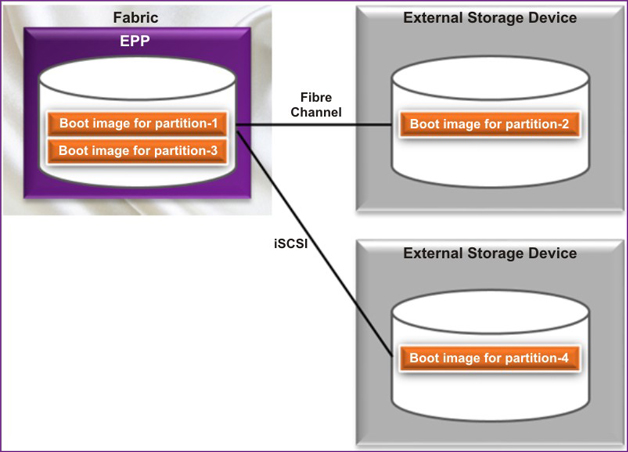Partition blueprints and operating system gold images reside on an enterprise partition platform’s (EPP’s) internal disk storage. Using a blueprint, you commission a partition image, which provides the running partition with hardware resources and an operating system.
By default, a partition operating system boots from the EPP’s internal disk storage. However, you may configure your partition image to boot from an external storage device (for example, a storage area network) rather than from the EPP’s internal disk storage. Depending on your enterprise network architecture, your external storage device may be connected to the fabric with dedicated fibre channel cabling or the iSCSI storage networking protocol.
As part of this process
The operating system image is copied onto the external storage device.
The partition is configured to boot from that external storage device rather than from the EPP’s internal disk storage.
One advantage to placing the boot volume on external storage is that it is easier to recover the partition in case of platform failure.
Booting from external storage is on a partition-by-partition basis. On a given EPP, some partitions may boot from internal storage, while others boot from external storage.

Note that it is the customer’s responsibility to ensure that the platform from which the external storage logical unit number (LUN) is accessed has a valid license for running the operating system.